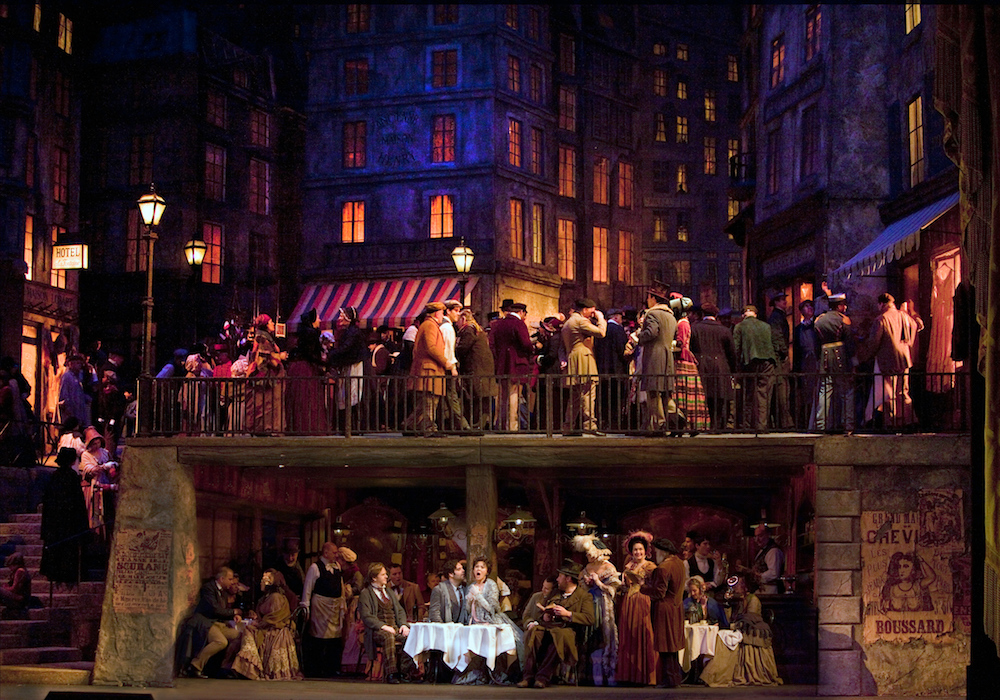
Cyril Harris, an acoustician consulting on the opera house, produced five horseshoe-shaped balconies that were separated from the surrounding building shell. When it came time to design the interior of the Metropolitan Opera House, a frustrated Wallace Harrison took a more advisory role. It is generally well-received by the public today. However, after years of unforgettable performances, a sense of nostalgia has been grown for the building’s exterior. Most argued that the building tried to please everyone, but neither achieved a sense of ingenuity nor a sense of tradition. Wallace Harrison’s opera house was heavily criticized by architectural experts and even the public upon its completion, but the design was hardly his own. The northern and southern aspects of the building were defined by 3’4” louvered windows, lining their façades. A single-story above the entry sat a patio reception space connected to the lobby. The building’s five symmetrical archways fronting on the plaza housed a wall of glass accentuated by an almost “collaged” framing. What resulted was a simple rectangular box, clad in travertine like its neighbors. Harrison’s unique designs were discarded in favor of more traditional forms. By 1960, while Harrison was still considered the architect behind the Metropolitan Opera House, there were very few traces of his design and personal style. Eventually, Harrison’s design mirrored the rectilinear format of its neighbors and his arches were flattened on the roof to fit within this envelope. However, even these more conservative plans had to be altered in 1958 to reflect a 25% cost reduction. Long barrel vaults connected the eastern reception space with the stage to the west. Clad in travertine, this impressive design incorporated a double arcade covering glazed archways on the eastern façade.

#Metropolitan opera house phone series
Harrison created a design that housed the opera in a series of five exposed arches. Harrison could do nothing but oblige his clients. However, infighting between Harrison and the Metropolitan Opera Building Committee nullified Harrison’s radical design elements, resulting in a much more conservative design. Harrison imagined unique elements such as undulating forms and a vast colonnaded plaza. He had grand ambitions for the opera house design.

Harrison was commissioned to design the opera house as the centerpiece for the entire fine arts complex, which he was able to achieve through his position as director of the design team and lead planner for the entirety of Lincoln Center. Moses would eventually convince these cultural institutions to move to Lincoln Center, near where he was planning an auxiliary campus for Fordham University.Īfter nearly another decade of planning, the Metropolitan Opera would move to their new home at Lincoln Center, the third building to populate the plaza, fully defining this space. However, this idea did not gain public approval due to poor planning, setting aside government funding to support these organizations’ relocation. Robert Moses, in an effort to help the Metropolitan Opera find a new site, incorporated space for the opera and the New York Philharmonic Orchestra in his reimagination of Columbus Circle. The economic hardships of the Great Depression further delayed the growth of the Met, and they would not have the opportunity to expand and further express the presence of American cultural sophistication until after the Second World War, in the mid-1950s. In the 1920s plans were made to house the company at Rockefeller Center, but these were never realized. The Metropolitan Opera, the founding organization of Lincoln Center for the Performing Arts, struggled for decades to find a home that would aid their mission in an effort to elevate the world’s cultural understanding of the United States.



 0 kommentar(er)
0 kommentar(er)
